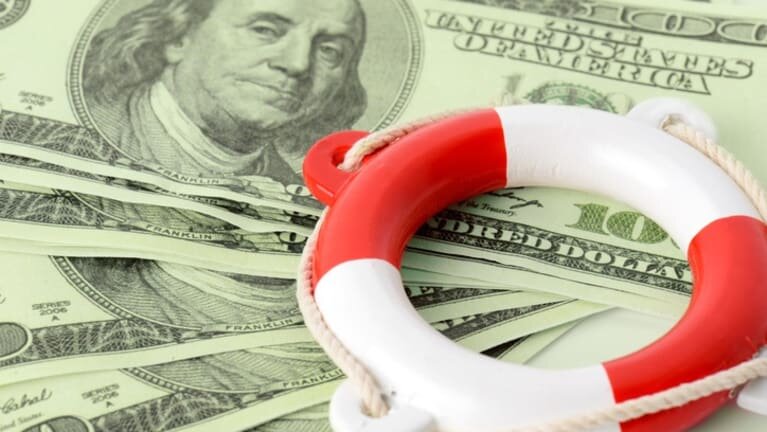The second quarter of 2020 was the worst for the U.S. economy since the government began keeping records in 1947 and about four times worse than the weakest quarter of the Great Recession. The Bureau of Economic Analysis said the U.S. economy was about 9.5 percent smaller in the second quarter than it was in the first quarter, amounting to a 32.9 percent annualized pace. When adding in the damage of the first quarter, economist Joel Naroff notes total Gross Domestic Product (GDP) is 10.6 “below where it was at the end of 2019"
Naroff points out but for state and federal unemployment payments, the jaw-dropping Q2 GDP could have been WORSE. As consumers and businesses stopped short, the government stepped in to keep the spending spigots open. “That was absolutely necessary and if it didn’t happen, the decline might have been fifty percent or more.”
Government emergency efforts worked and the economy saw significant progress in May and June. But with the virus spiking in wide swaths of the country in July, hopes have dimmed hopes for a more significant third quarter bounce.
Last week, initial claims for unemployment benefits rose for the second time in a row, after falling for 15 straight weeks. As officials from the Federal Reserve noted in their recently concluded meeting, as the virus goes, so goes the economy. “The path of the economy will depend significantly on the course of the virus.”
That path forward may rely disproportionately on the more than 30 million Americans who are collecting unemployment benefits. The expiration of the CARES Act provisions that provide an extra $600 per week in unemployment benefits, eviction moratoriums and mortgage forbearance could cause great pain for Americans, who through no fault of their own, are sidelined from the labor force. These people are worried about the stalemate in Congress over extending financial lifelines, which must be resolved quickly for both humanitarian and economic reasons.
For those Republicans who are worried about the amount of government assistance, Naroff warns that cutting the support could short circuit that recovery, which could mean that “this welfare economy will be with us for a lot longer than anyone wants to see and the long-term negative impacts will be massive.”
For those who are worried that $600 per week is too generous, there is evidence that low income workers receiving benefits have been critical to the economy, according to Opportunity Insights, a nonpartisan research and policy institute, which brings together leading economists from Harvard University and Brown University.
Analysts, who drill down on data to provide a real-time picture of the pandemic economy, have found that “while spending has rebounded over the last 2 months, especially for low-income households, spending among high-income households remains considerably lower than pre-COVID-19 levels.”
As some lawmakers pass judgment on those who are staying home collecting more money than they made before the pandemic, there appears to be no judgment of workers who received $1,200 stimulus checks and saved (or paid down debt) those dollars, rather than spend them.
Perhaps the July employment report will underscore why Congressional action is so necessary. After showing 7.5 million new jobs in May and June, the July report may not be so upbeat.
![Jill on Money [ Archive]](http://images.squarespace-cdn.com/content/v1/59efbd48d7bdce7ee2a7d0c4/1510342916024-TI455WZNZ88VUH2XYCA6/JOM+Blue+and+White.png?format=1500w)
